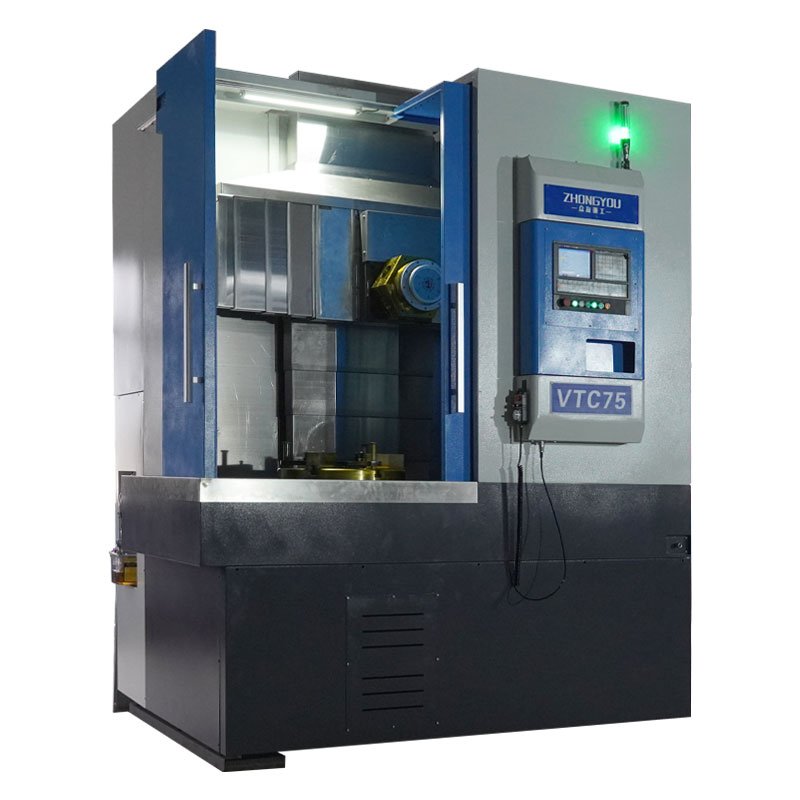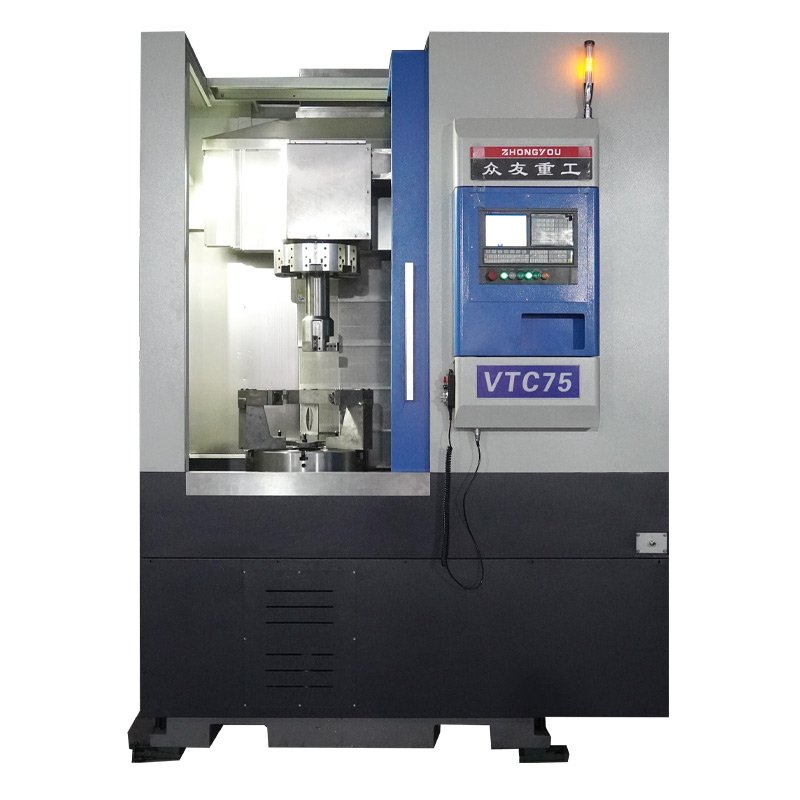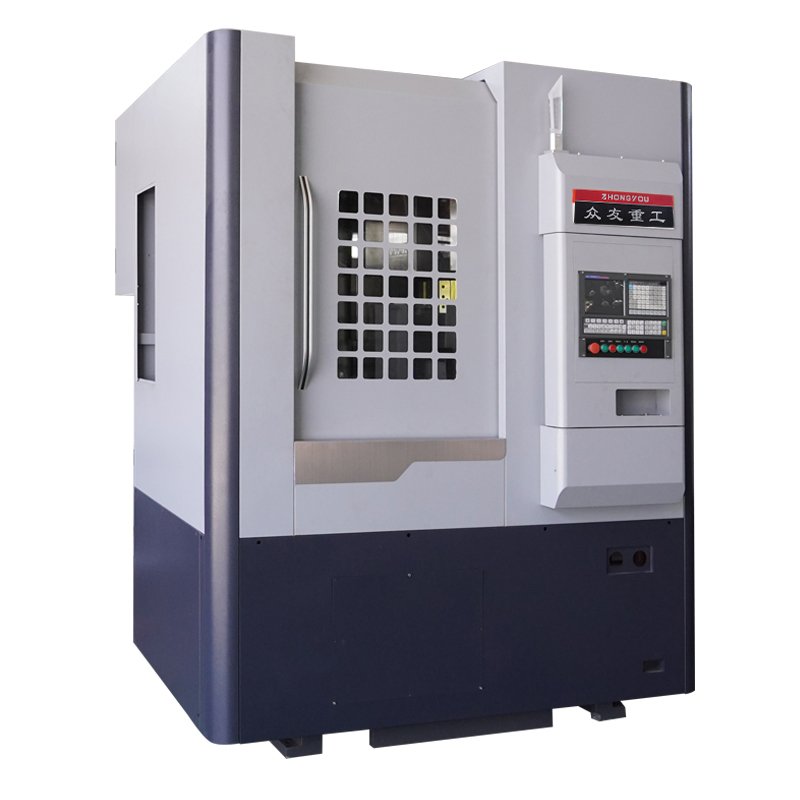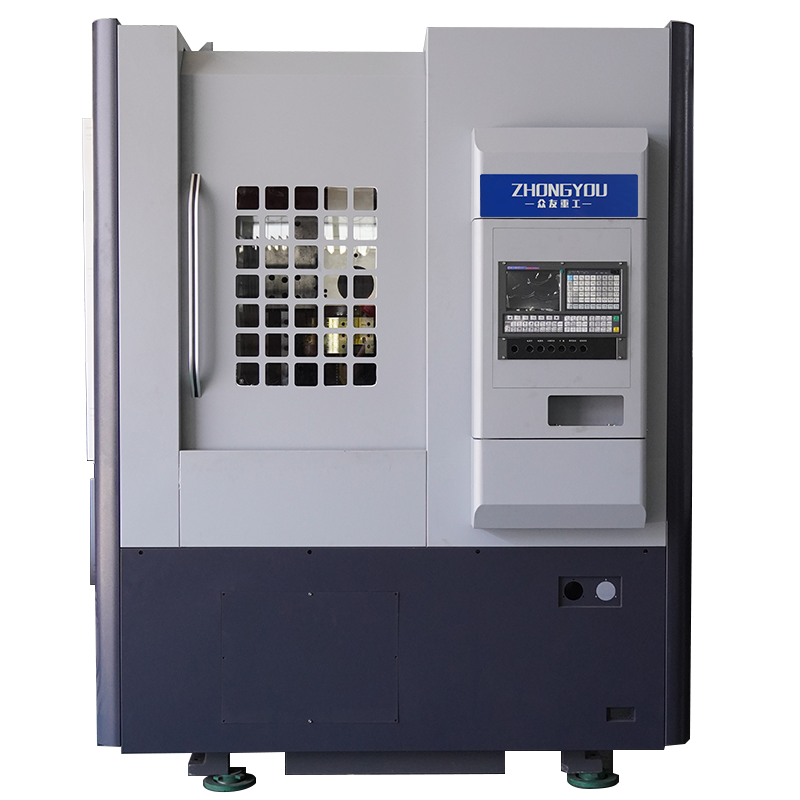What are the differences between a CNC vertical lathe and a conventional vertical lathe?
1. Drive Mechanism and Precision Control
- Conventional Vertical Lathes:
Rely on gear and conventional screw-nut transmission systems, which inherently exhibit backlash in motion pairs. Manual adjustments are required for operation, resulting in relatively low repeatability accuracy (typically IT9-IT8 grade). Measurement processes necessitate manual intervention after machine stops, leading to significant errors and low efficiency. - CNC Vertical Lathes:
Utilize stepper motors driving ball screws for transmission. The preloaded ball screws eliminate backlash, ensuring precision guaranteed by both machine design and programmed parameters. In-process automatic measurement compensates for tool wear errors, achieving stable accuracy (up to IT6 grade) and superior surface roughness.
2. Automation and Production Efficiency
- Conventional Vertical Lathes:
Require manual tool changes, feed rate adjustments, and cutting parameter optimization. Processing complex components is time-consuming and heavily dependent on operator skill levels, leading to inefficiencies. - CNC Vertical Lathes:
Enable fully automated machining through programmed control, supporting automatic tool changing, multi-axis simultaneous motion, and complex path generation. Once the workpiece is clamped and the program is input, the entire process executes automatically, boosting productivity by 300-500%—particularly advantageous for mass production scenarios.
3. Operational Complexity and Skill Requirements
- Conventional Vertical Lathes:
Demand manual control of speed gears, tool post positioning, and feed rates, requiring highly skilled operators. Low-skill operations significantly increase scrap rates due to human error. - CNC Vertical Lathes:
Operators need programming expertise, but the machining process itself is program-controlled, minimizing manual intervention. This reduces dependency on operator skill while enhancing product consistency across batches.
4. Machining Scope and Adaptability
- Conventional Vertical Lathes:
Primarily suited for heavy-duty components with large diameters and short lengths (e.g., discs, wheels). Limited capability for processing complex geometries or high-precision requirements. - CNC Vertical Lathes:
Programmable for arbitrary conical angles, curved surfaces, threads, and other intricate shapes. Additional attachments enable integrated multi-process operations such as milling and grinding, offering superior adaptability.
5. Structural Design and Load Capacity
- Conventional Vertical Lathes:
Vertical spindle layout with horizontal worktable design limits load-bearing capacity. Excessive workpiece weight induces deformation due to gravity, compromising accuracy. - CNC Vertical Lathes:
Optimized structural design supports heavy-duty machining (up to 10-ton capacity) and diameters ≤2.5 meters. The vertical configuration prevents gravity-induced workpiece deformation, maintaining dimensional stability.
6. Cost Analysis and ROI
- Conventional Vertical Lathes:
Lower initial equipment cost but higher long-term operational expenses due to labor-intensive processes, skill dependency, and inconsistent scrap rates. - CNC Vertical Lathes:
Higher upfront investment but delivers cost recovery within 1-2 years through enhanced productivity, reduced scrap, and minimized labor costs. Ideal for new enterprises or precision machining applications.
Summary: Selection Criteria
- Choose Conventional Vertical Lathes for:
Small-batch production, low precision requirements, limited budgets, and availability of highly skilled operators. - Choose CNC Vertical Lathes for:
High-precision, high-efficiency machining of complex geometries; reduced operator skill dependency; and superior long-term cost-effectiveness, particularly in automated manufacturing environments.



